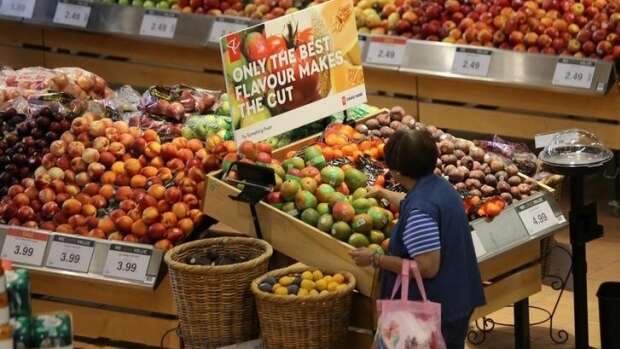Marcy Nicholson, Bloomberg News, November 08, 2020
A woman browses in the fruit section of a Loblaw supermarket in Collingwood, Ontario, Canada July 28, 2017. , The Canadian Press
Canadian food prices will increase three per cent to five per cent next year due to the economic impacts of the pandemic, with bakery goods, meat and vegetables bringing the biggest hikes to grocery bills, according to Canada’s Food Price Report.
A family of four could spend $695 more on groceries next year to lift the annual household food bill to $13,907, four Canadian universities said in a study released Tuesday. That marks the highest predicted dollar increase in 11 years of publishing the annual report.
“The pandemic affected the entire agri-food chain from farmgate to consumers,” said the report by Dalhousie University, University of Guelph, University of Saskatchewan and University of British Columbia. “In 2021, we can expect to feel the continued effect of COVID-19 on our agri-food chain and global food systems, in addition to the growing impact of climate change.”
The pandemic brought shifts in consumer demand, slowdowns and closures to food plants and distribution centers and labor shortages and logistics disruptions, the report said. The lingering effects of C-19’s impact could carry into 2021, and Canadians should expect to spend more on groceries and dining out. A surge in online demand that pushed grocers to invest in e-commerce platforms may also translate into higher food costs.
Food Inflation
“Canada’s food inflation index has outpaced the general inflation index over the last 20 years, and that trend is likely to continue for a while,” the report said.
The cost of meat and vegetables are forecast to rise 4.5 per cent to 6.5 per cent next year, while bakery items are expected to rise 3.5 per cent to 5.5 per cent, the report said. Restaurant bills are estimated to rise three per cent to five per cent.
Consumer demand has shifted toward food retail as pandemic lockdowns forced many restaurants to temporarily close. Canadians currently buy an estimated 74 per cent of their food from retailers such as grocery stores, with just 26 per cent spent at restaurants and other food services. Before the pandemic, 62 per cent of food budgets were spent at retailers with the rest on food services.
Food-service spending isn’t expected to return to pre-pandemic levels in 2021, with restaurants likely impacted by subsequent COVID-19 waves that could bring more shutdowns.
“While this might suggest that families will have more money in their overall food budget — even despite food price increases — this may not be the case due to the anticipated increase in, and continued demand for, online food retail and services,” the report said.





